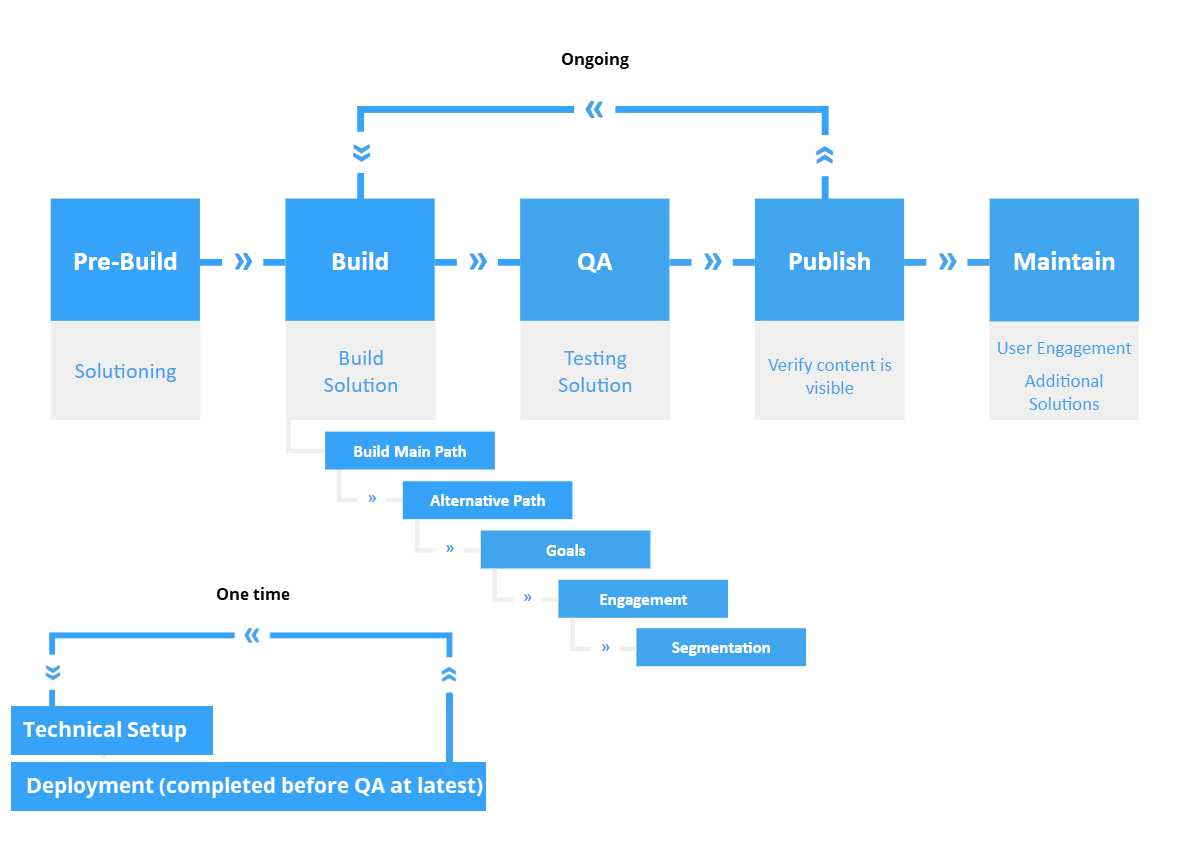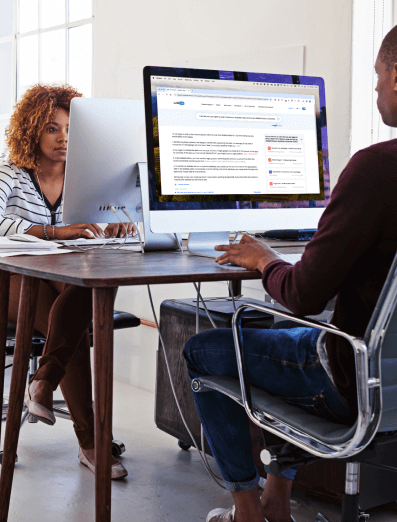WalkMe Solution Planning: Getting Started Guide
Brief Overview
Planning your WalkMe Solution before you begin building can help make your overall WalkMe build more effective. Identifying your use case will help you determine which WalkMe apps will be most valuable for your platform. Focusing on specific goals within your use case will ensure that all of your WalkMe content will work together to form a cohesive solution.
We have mapped out the phases of a successful WalkMe project below and will go over each step in depth.
Some of these phases will be ongoing, and two will only need to be completed one-time per platform. Your Account Manager will guide you through these processes to ensure the best options are chosen for your specific needs.

Pre-Build
During the Pre-Build phase, you will identify your WalkMe use case and establish goals within your use case. You can then decide what WalkMe content will best help you meet these goals.
Business Value Discovery
- What business impact are you trying to achieve?
- What is wrong with the current situation?
- What does success look like to you?
- How will you know you were successful in achieving the business objectives?
- Is there a benchmark for success you can measure against?
- What are the key processes we should focus on in order to achieve maximum impact?
- Is there a compelling event for go-live?
Technical Discovery
- What is the platform we will be building on? Is it internal (CRM, HRM etc.) or external-facing (E-commerce etc.)?
- Are you planning on using an extension or snippet in order to allow end-users to see WalkMe? If extension - can you mass-deploy? (This is covered more under Deployment)
- Are there different user roles/profiles/locations that you are targeting? How can you tell them apart from each other (variables, jQuery, etc.)?
- How do we access the platform (Sandbox, Production)? - Get site credentials and URLs post-login.
- Any site, privacy, or data limitations we should be aware of?
- Is the platform stable (not undergoing changes)?
- Are you looking to have WalkMe content available in several languages?
- Which tracking level do you want to have? (Default, DXA, Session Playback)
Identify your use case: What are your primary reasons for using WalkMe on your platform?
Onboarding
WalkMe can be used to guide new users through processes that are essential for success on your platform.
For an Onboarding use case, you may use: Smart Walk-Thrus, Onboarding Tasks, Unique User ID, Resources, ShoutOuts, and Surveys.
Support Ticket Deflection
Use WalkMe to make it easier for your users to solve their issues on their own by focusing your solution on issues that most commonly result in users opening support tickets.
For a Support Ticket Deflection use case, you may use: Smart Walk-Thrus, SmartTips, Launchers, Resources, and Keywords.
Feature Adoption
Use WalkMe to notify your users of new features and guide them through the process of adopting them.
For a Feature Adoption use case, you may use: Smart Walk-Thrus, ShoutOuts, Surveys, and Shuttles.
Conversion
Using WalkMe to guide and engage free-trial or demo users will increase free-to-paid conversions on your platform.
For a Conversion use case, you may use: Smart Walk-Thrus, Onboarding Tasks, ShoutOuts, and Shuttles.
User Retention
Use WalkMe to ensure that your users develop good habits and utilize all of the tools available on your platform in order to improve user retention.
For a User Retention use case, you may use: Smart Walk-Thrus, SmartTips, Launchers, and Automation.
You will notice that the Build / QA / Publish steps loop in the flow chart above. This is because it is not necessary to build out your entire WalkMe solution before publishing. You can build and publish a single process, then repeat this with a new process as you continue to add additional content to your overall solution.
Technical Setup
Once you have decided what WalkMe content will be best for your needs, the Technical Setup can be completed. This will be done by WalkMe Services on the WalkMe editor before any building is started to make sure that the editor is compatible with your platform and equipped with the necessary building tools.
Build
The Build phase involves actually building your WalkMe solution using the WalkMe Editor. The Build process can be divided into five steps:
1. Build Main Path
The main path is the path of a Smart Walk-Thru that most users will take to complete a process from start to finish. Learn more about Smart Walk-Thrus.
2. Alternative Paths
Alternative Paths account for deviations from the main path that may occur due to differences in user behavior or differences in the user interface. Learn more about Splits.
3. Goals
Goals ensure that you are able to track your users' successful completion of a process, whether they complete the process using WalkMe guidance or independently. Learn more about Goals.
4. Engagement
Engagement involves ensuring that users have access to your WalkMe content. Engagement can be enhanced by building ShoutOuts, Launchers, or adding AutoPlay Rules to Smart Walk-Thrus. Learn more about Engagement.
5. Segmentation
Segmentation ensures that each of your users only sees the content that is relevant to them. Learn more about Segmentation.
Deployment
Deployment can be initiated as early as possible in the project and should be completed before QA has begun. There are 2 methods for deployment, Snippet and Extension. Your Account Manager will guide you to choose the best option for your needs and WalkMe Services will be able to complete the Deployment process.
QA
The QA phase involves ensuring that your new WalkMe content works as expected on your platform and with your existing WalkMe solution. You can QA using Preview mode once Deployment is complete.
It is recommended to do two rounds of QA on the top two most common browsers, and make any needed adjustments after each round. Learn more about Quality Assurance Testing best practices.
Publish
The Publish phase involves publishing your content to the Test environment, testing, and then making the content available to your end users by publishing to the Production environment.
Publishing the content is an easy and quick process as long as you have the proper setup in place. Learn more about Publishing.
Maintain
This is the phase in which we reflect on the results we managed to produce so far in terms of WalkMe Insights user engagement and the original use-case that was established during the pre-build.
The data collected from Insights will allow you to optimize your WalkMe solution by identifying pain points in your platform, and determining which pieces of your WalkMe solution might benefit from increased engagement. Learn more about analyzing Insights data.
Based on the results we decide on the next steps. Those usually come down to the following actions:
- Improving existing content - fix content/segmentation that isn't functioning as expected, add keywords to content to make it easier to find in the menu, add more goals/funnels to track successful completion.
- Adding access points to existing content - make it more contextual and engaging.
- Create additional content to support new processes that have not yet been supported.
- Add additional functionalities that were less of a priority in the first phase, such as integrations, to get more value out of the implementation.
As always we are here for any questions. Please reach out to your Customer Success Manager or contact Support and we will be happy to assist.
